|
Family: Caprimulgidae (nightjars)
Life
> Eukaryotes >
Opisthokonta
> Metazoa (animals) >
Bilateria >
Deuterostomia > Chordata >
Craniata > Vertebrata (vertebrates) > Gnathostomata (jawed
vertebrates) > Teleostomi (teleost fish) > Osteichthyes (bony fish) > Class:
Sarcopterygii (lobe-finned
fish) > Stegocephalia (terrestrial
vertebrates) > Tetrapoda
(four-legged vertebrates) > Reptiliomorpha > Amniota >
Reptilia (reptiles) >
Romeriida > Diapsida > Archosauromorpha > Archosauria >
Dinosauria
(dinosaurs) > Saurischia > Theropoda (bipedal predatory dinosaurs) >
Coelurosauria > Maniraptora > Aves
(birds) > Order: Strigiformes
Species indigenous to southern Africa
|
Caprimulgus
europaeus (European nightjar) The European
nightjar is a Palearctic breeding migrant, with its non-breeding grounds
mainly in West and East Africa, but also to a lesser extent in southern
Africa. It arrives in our region around September-October, after a long and
difficult flight from Eurasia. It occurs in spaced out populations across
southern Africa, generally preferring woodland and savanna. It exclusively
eats flying insects, especially beetles, doing most of its foraging at dusk
and a few hours before sunrise. It stays here for about a half a year, most
of the birds have left by the end of April. |
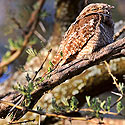 |
|
Caprimulgus
fossii (Square-tailed nightjar, Mozambique nightjar)
The Square-tailed nightjar is occurs across Africa south of the Sahel
semi-desert, preferring open areas with sandy soil, such as Acacia
savanna, miombo woodland, etc. It is insectivorous, feeding mainly on
beetles, grasshoppers and moths. It mainly hunts just after sunset,
searching for prey from a low perch, then hawking any insect that passes by.
It nests in shallow, natural depressions in sandy soil or fine gravel,
usually in bare, open areas with little vegetation, such as cultivated
fields. It lays 1-2, usually 2 eggs, which are incubated mainly by the
female for about 14-17 days. The chicks can walk around soon after hatching,
becoming fully independent after a month or two of parental care. |
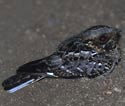 |
|
Caprimulgus
natalensis (Swamp nightjar, Natal nightjar) |
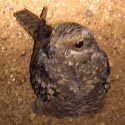 |
|
Caprimulgus
pectoralis (Fiery-necked nightjar) The
Fiery-necked nightjar occupies a large area of Africa south of the equator,
avoiding extremely arid areas, mainly occurring in well-developed woodland
with dense leaf litter. It is insectivorous, feeding mainly on beetles and
moths, usually hunting at dawn or dusk. The nest is a simple depression in
the ground, usually in and surrounded by leaf litter. Here it usually lays 2
eggs, which are incubated by both sexes for about 18-19 days. The chicks are
cared for by both parents, and can fly strongly at about 17-18 days old. The
parents usually desert their territory and chicks when they reach 30 days
old, however the brood still live there for up to 150 days more before
leaving. |
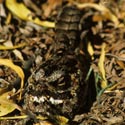 |
|
Caprimulgus
rufigena (Rufous-cheeked nightjar) The
Rufous-cheeked nightjar is common in large parts of southern Africa, being
especially populous in Botswana and South Africa. It is an intra-African
migrant, breeding in southern Africa and moving to north at the end of the
breeding season. It lives in a variety of habitats, ranging from Kalahari
savanna to open woodland and the Karoo. It eats exclusively insects, hunting
near waterholes at dusk. It nests in natural, shallow depressions in coarse
soil, where the lay 1-2 eggs at 48h intervals, the second always being
larger and heavier than the first. It incubates them for 15-17 days, after
which the chicks hatch. They are fed and brooded by the male at dusk,
freeing up the female to feed. The stay in the nest for 15-17 days. |
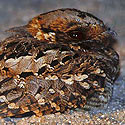 |
|
Caprimulgus
tristigma (Freckled nightjar) The
Freckled nightjar occurs in localized populations across sub-Saharan Africa,
from Guinea to Ethiopia south to southern Africa. Here it is scarce in the
western half of the region, but is however much more common in the eastern
Half, especially in Zimbabwe. It roosts and nests on rocks, and can actually
tolerate surface temperatures of 60 degrees centigrade! It feeds mainly on
beetles and moths, and has the largest gape of any nightjar, and is capable
of swallowing 3.5 cm long insects whole. It nests in natural hollows in
rocks, where it lays 2 eggs, which are incubated for 18-20 days by both
sexes. The chicks are cared for by both parents, and are camouflaged so that
they blend in with the surrounding rock. |
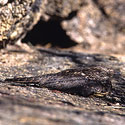 |
|
Macrodipteryx
vexillarius (Pennant-winged nightjar) |
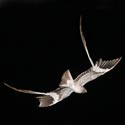 |
|
